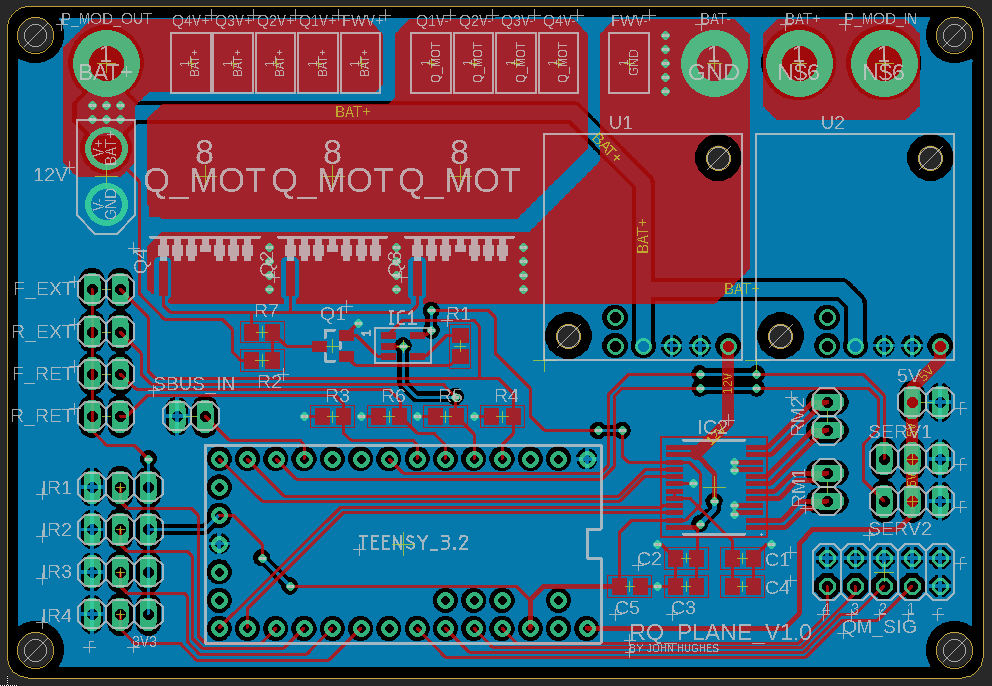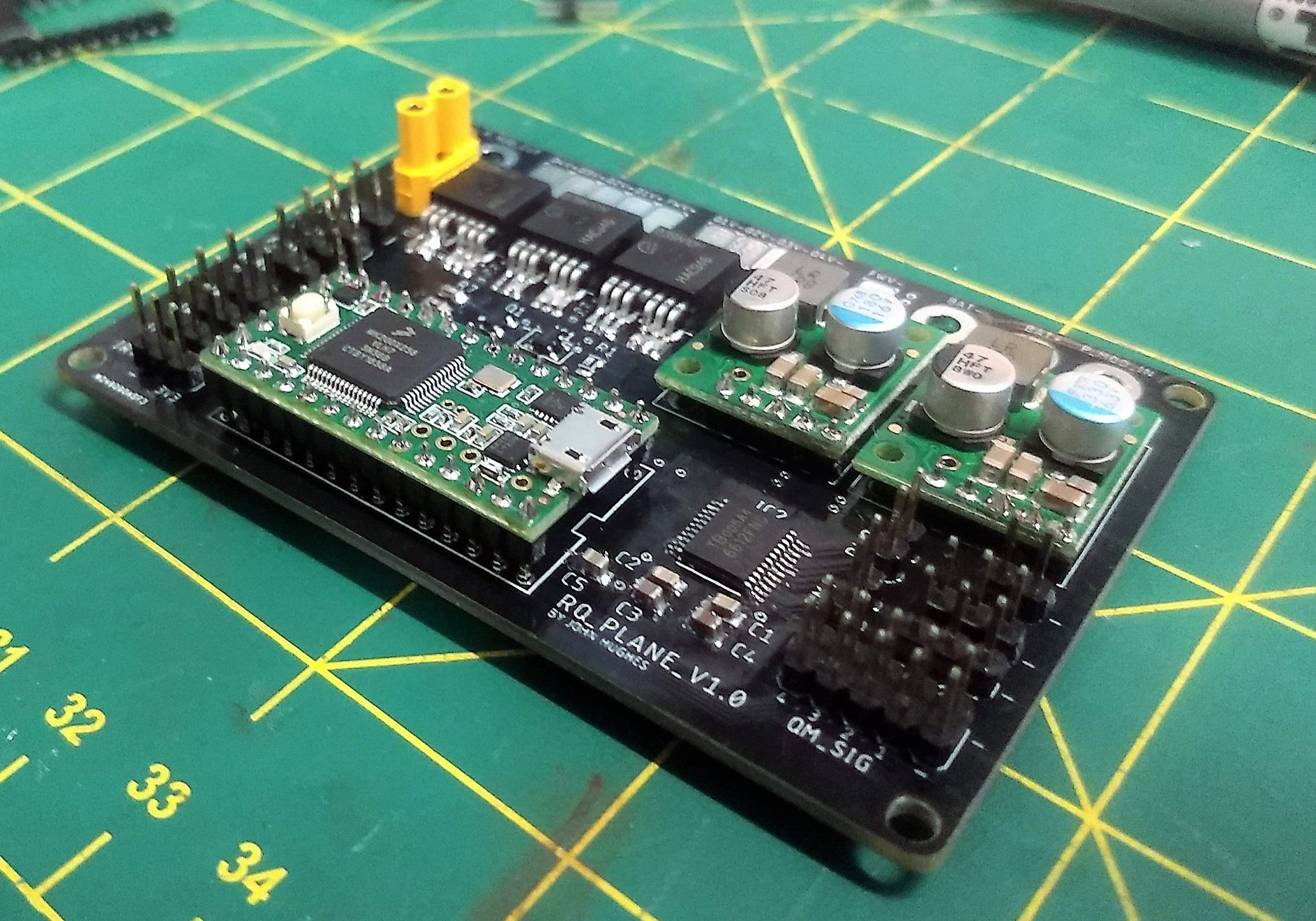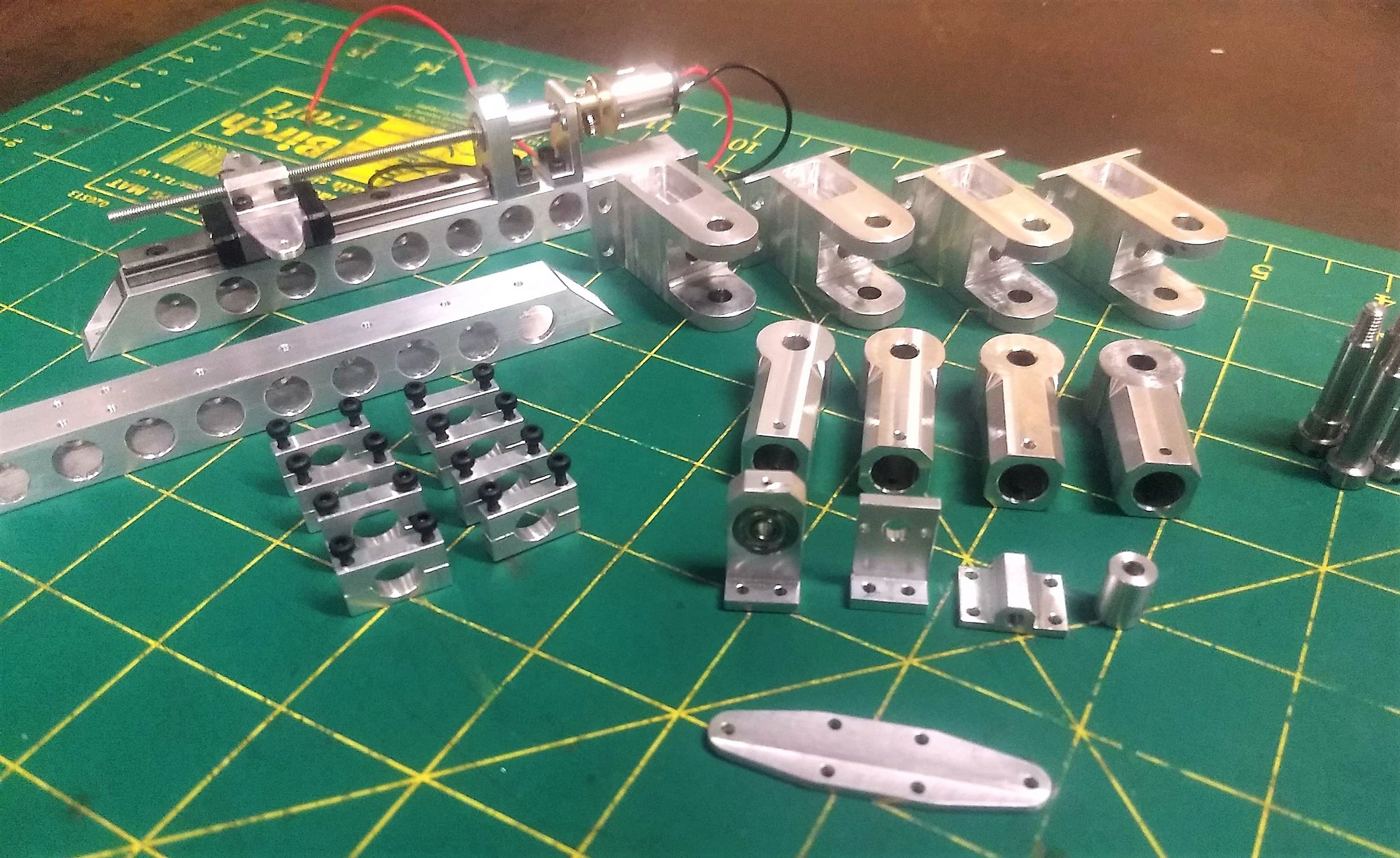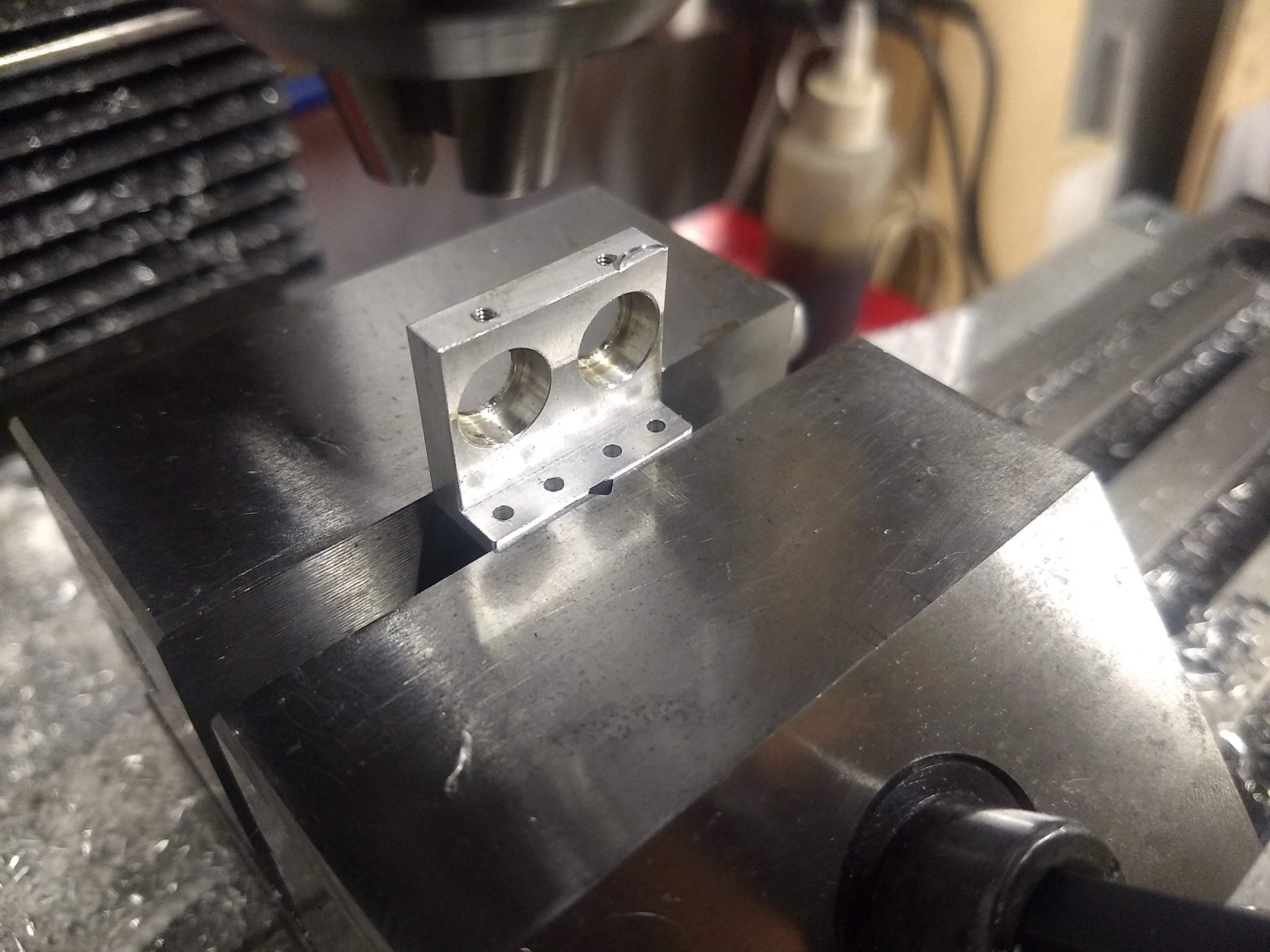Electric UAV with Retractable VTOL System
For my aerospace degree final year project, I carried out the design and testing of a small scale electric UAV with a retractable VTOL system. The purpose was to explore the feasibility of retracting the VTOL propulsion system into the fuselage, in order to significantly reduce cruise drag compared with existing UAVs at this scale.
Over the course of 6 months I conceived, designed and built a complete aircraft to explore this question. This was a fast paced, multifaceted project spanning aerodynamic design, custom VTOL design algorithms, precision actuator design, PCB design, control software development, carbon fiber composites manufacturing, CNC machining and flight testing.
The aircraft was successfully test flown with results showing that a retraction mechanism for the VTOL system can be integrated, such that the drag reduction and hence range increase benefit, significantly outweighs the mass penalty of the mechanism.
See below video for project details including, design, manufacture and flight testing phases.
Project Gallery
PRELIMINARY DESIGN
Mission profile that the aircraft was optimised for
Output from custom developed eVTOL design tool
Aircraft drag polar
Inviscid CFD analysis results
Wing design properties
DETAILED DESIGN
Main fuselage structure and VTOL system
Custom designed miniature low backlash linear actuator
Nested fuselage parts ready for laser cutting
FEA analysis of main VTOL boom clevis
Linkage geometry and force modelling in Matlab
Cut away view showing retraction mechanism
Boom clevis manufacturing drawing
Boom pivot, linear actuator linkage and adjustable limit switches
Custom PCB schematic
PCB Layout
Completed PCB
MANUFACTURE
Fabrics, foam cores and mold beds ready for layup of wing and tail
Tail in vacuum bag ready for curing
Roughing out boom clevis parts using a waterjet cutter
Complete set of custom machined parts made for the project
Hot wire cutting wing foam core
Fuselage structure mid assembly
Machining bearing mount blocks for the linear actuator mechanism






















